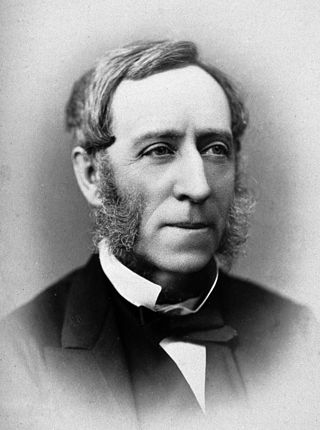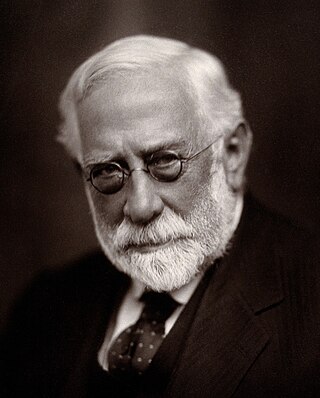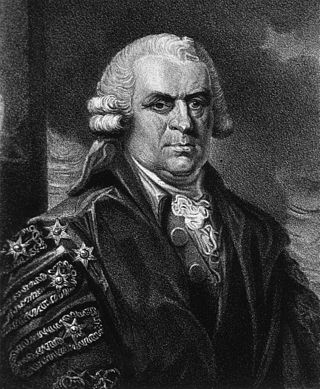
John Nash was one of the foremost British architects of the Georgian and Regency eras, during which he was responsible for the design, in the neoclassical and picturesque styles, of many important areas of London. His designs were financed by the Prince Regent and by the era's most successful property developer, James Burton. Nash also collaborated extensively with Burton's son, Decimus Burton.

Thomas Chandler Haliburton was a Nova Scotian politician, judge, and author. He made an important political contribution to the state of Nova Scotia before its entry into Confederation of Canada. He was the first international best-selling author of fiction from what is now Canada. In 1856, he immigrated to England, where he served as a Conservative Member of Parliament. He was the father of the British civil servant Lord Haliburton and of the anthropologist Robert Grant Haliburton.

Regent's Park is one of the Royal Parks of London. It occupies 410 acres (170 ha) of high ground in north-west Inner London, administratively split between the City of Westminster and the Borough of Camden. In addition to its large central parkland and ornamental lake, it contains various structures and organizations both public and private, generally on its periphery, including Regent's University and London Zoo.

Decimus Burton was one of the foremost English architects and landscapers of the 19th century. He was the foremost Victorian architect in the Roman revival, Greek revival, Georgian neoclassical and Regency styles. He was a founding fellow and vice-president of the Royal Institute of British Architects, and from 1840 architect to the Royal Botanic Society, and an early member of the Athenaeum Club, London, whose clubhouse he designed and which the company of his father, James Burton, the pre-eminent Georgian London property developer, built.

Sir Richard Quain, 1st Baronet, was an Irish physician.

Sir William Jenner, 1st Baronet, GCB, QHP, FRCP, FRS was a significant English physician primarily known for having discovered the distinction between typhus and typhoid.

Sir Thomas Barlow, 1st Baronet, was a British royal physician, known for his research on infantile scurvy.

Sir William Scovell Savory, 1st Baronet, was a British surgeon.
Physician to the King is a title held by physicians of the Medical Household of the Sovereign of the United Kingdom. Part of the Royal Household, the Medical Household includes physicians, who treat general conditions, and extra physicians, specialists who are brought in as required.

James Burton was an early British Egyptologist, known for his pioneering exploration and mapping of the Valley of the Kings, during which he became the first individual of the modern age to enter KV5; his pioneering excavations at Karnak, during which he discovered the Karnak king list; and his excavations at Medinet Habu, during which he was part of the team that discovered TT391.

The Monro of Fyrish family were a Scottish family and branch of the ancient highland Clan Munro. The family produced a notable dynasty of doctors to London in the 18th and 19th century where they were involved in early work on curing 'insanity'. Four generations occupied successively the position of (Principal) Physician of the notorious Bethlem Hospital (Bedlam). They were also leading members of a variety of important medical associations. Other members were painters, priests and philanthropists of note and one was an important early patron to J. M. W. Turner.

Lieutenant-Colonel James Burton was the most successful property developer of Regency and of Georgian London, in which he built over 3000 properties in 250 acres. The Oxford Dictionary of National Biography says that Burton was "the most successful developer in late Georgian London, responsible for some of its most characteristic architecture".

Sir Norman Moore, 1st Baronet, FRCP was a British doctor and historian, best known for his work with the Royal College of Physicians and his writings on history of medicine. Born in Higher Broughton, Salford, Lancashire, the only child of abolitionist and social reformer Rebecca Moore, née Fisher, of Limerick and the noted Irish political economist Robert Ross Rowan Moore, Moore worked in a cotton mill before studying natural sciences in Cambridge and then going on to study comparative anatomy at St Bartholomew's Hospital.

Sir George Baker, 1st Baronet, FRS, FSA was physician to King George III.

Sir George Burrows, Bt, PRS, was an English physician and President of the Royal College of Physicians.
Captain Henry Marley Burton (1821–1880) was a British architect.
Sir William Errington Hume was a British physician and cardiologist.
Peter Wallwork Latham (1832–1923) was an English physician and professor of medicine at the University of Cambridge.

Henry William Fuller F.R.C.P. was an English physician and writer.















